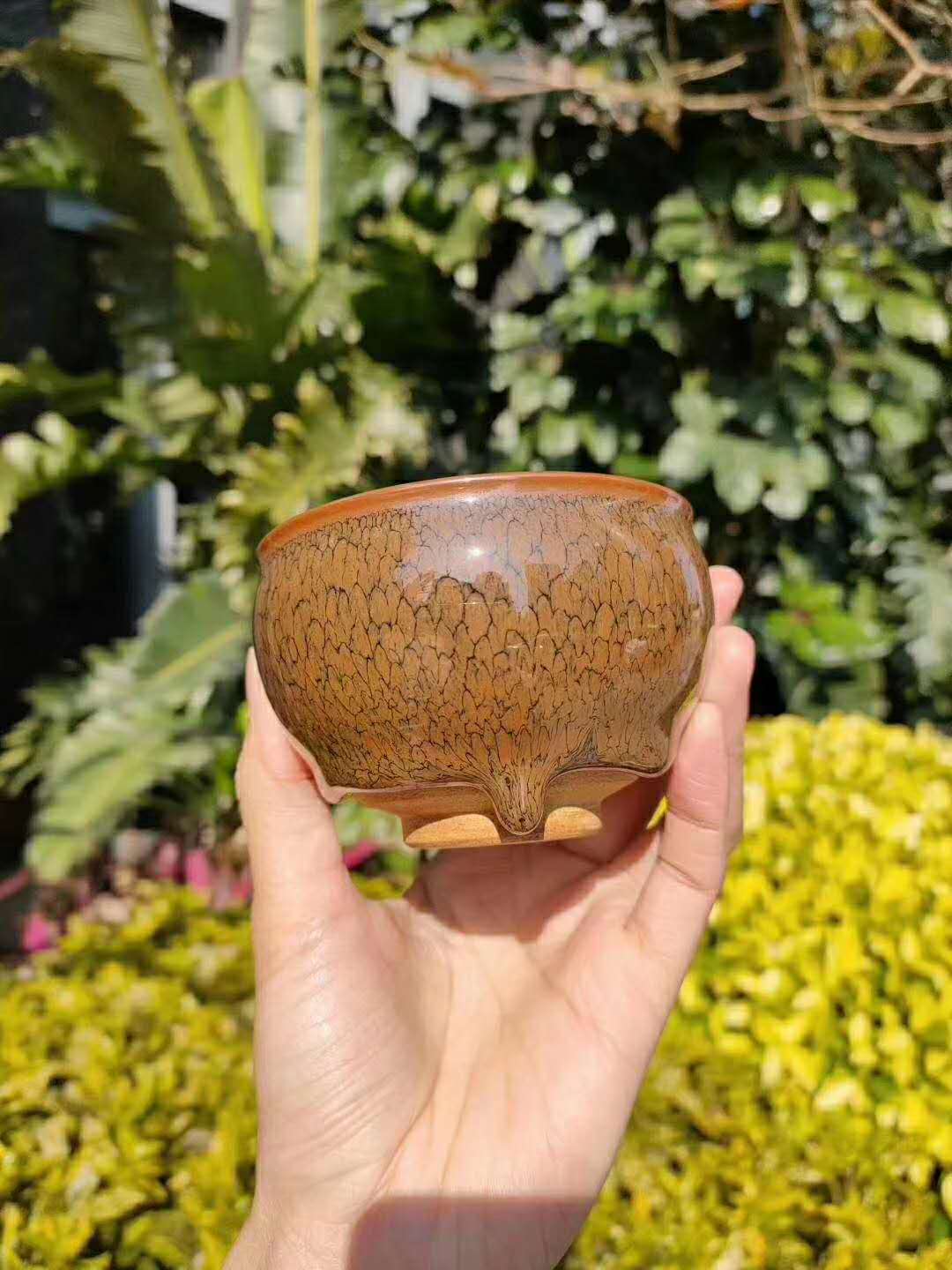For those who are new to purchasing Yixing teapots and are unsure how to open them, as well as how to maintain them during use, let me explain how to open and care for Yixing teapots. Generally speaking, newly purchased Yixing teapots do not require any special treatment, as they are fired at high temperatures of 1300 degrees and are not prone to any issues. However, before the first use, it is recommended to soak the teapot in hot water or tea for about half an hour to remove any residual heat and make the teapot more mellow. This soaking process not only removes any surface dust but also helps to "season" the teapot for better use. After soaking, dry the teapot with a cloth and place it upside down on a tea tray to air dry.
In terms of regular maintenance, if you want to develop a patina on your Yixing teapot, after each use, rinse it with boiling water and then place it upside down to air dry. Avoid wiping the teapot with a cloth and let the water on the surface of the glaze evaporate naturally. Over time, a patina will gradually form on the surface of the teapot. The patina is a film that forms on the glaze of the teapot. Some experienced collectors may have encountered tea stains on their teapots due to improper maintenance. If this happens, soak the teapot in boiling water for a while and use a tea cloth to wipe it several times, and the tea stains should be removed.
As for the type of tea used to care for my Yixing teapots, I prefer to use rock tea, as it contains a rich variety of trace elements and vitamins. When the tea interacts with the iron in the glaze of the teapot, it creates a slight reaction that accumulates over time, forming an oxidation film that easily develops into a rainbow-like patina.
In fact, there is no specific direction for using Yixing teapots to drink tea. Any tea that you enjoy can be brewed in a Yixing teapot. If you have a weak stomach, it is recommended to drink less green tea and opt for black tea instead. If you prefer stronger flavors, Wuyi rock tea is a good choice, while white tea is ideal for cooling and reducing internal heat. Regardless of the type of tea, the unique beauty of the tea soup in a Yixing teapot is undeniable. White tea has a light color, and when brewed in a Yixing teapot, the speckled pattern is highlighted with a soft glow. On the other hand, Wuyi rock tea has a dark color, and when brewed in a Yixing teapot, it glimmers with a golden sheen, making it truly beautiful.
Therefore, Yixing teapots are suitable for any type of tea, and tea with darker colors can be paired with lighter-colored Yixing teapots. Through different angles of light, they refract into various colors and images, providing the tea drinker with a new visual experience beyond the taste of the tea soup. Especially when paired with Pu-erh tea, Tie Guan Yin, and other teas, it creates a unique and delightful experience. In addition, the rich colors and patterns of Yixing teapots can be further enhanced by brewing tea, adding to the pleasure of appreciating and handling them.
Suggestion: Different teas can be brewed in different Yixing teapots, which can result in more beautiful patinas. It's important to note that raw Pu-erh tea and ripe Pu-erh tea should not be brewed in the same Yixing teapot to avoid mixing their unique flavors.









Share:
20 Tenmoku glaze colors: Discover the patterns of this ancient ceramic
Drinking tea with Tenmoku is a kind of fashion